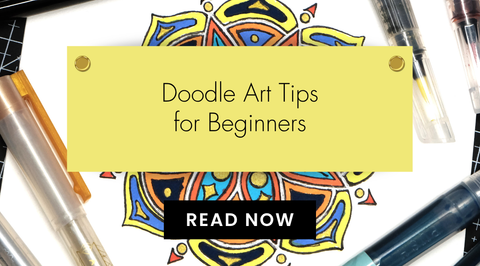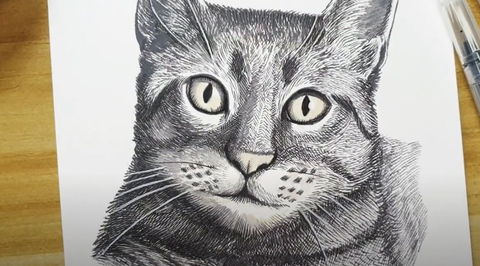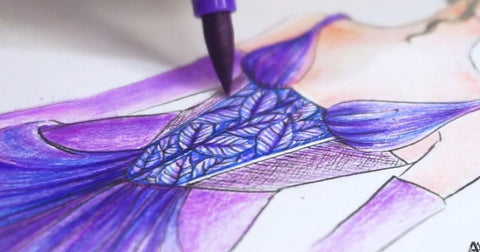The Magic of Color Theory: Understanding Color Relationships and Harmonies in Your Artwork
Last Updated: July 29, 2024
"Color helps to express light—not the physical phenomenon, but the only light that really exists, that in the artist's brain." – Henri Matisse
Your canvas is a blank expanse awaiting transformation, and it holds the potential for magic. This magic is the artistry of color, a dance that comes to life through the principles of color theory.
In the world of art, understanding the intricacies of color relationships and harmonies is akin to wielding a brush imbued with enchantment. Join us on a journey into the captivating realm of color theory, and discover how it breathes life into your artwork.
Color Theory in Art: Unveiling the Canvas

At its core, color theory is a conceptual framework that explains how colors interact with each other and how artists can use this knowledge to create visually appealing and meaningful compositions. It encompasses a wide range of principles, including the color wheel, color relationships, and color harmonies. Think of it as a guide to navigating the spectrum of hues and shades.
The color wheel, on the other hand, is a visual representation of the spectrum of colors arranged in a circular format. It serves as a compass for painters and artists and introduces us to the primary colors — red, blue, and yellow — and their offspring, the secondary and tertiary colors.

Understanding this wheel lays the foundation for comprehending color relationships and harmonies. For more color theory resources, feel free to check out and download our color swatches and palette inspiration for artists here.
| Did you know? Tertiary colors have other names than their more straightforward ones: Indigo (blue-purple), teal (blue-green), chartreuse (yellow-green), amber or goldenrod (yellow-orange), vermilion or scarlet (red-orange), and magenta (red-purple). |
The Significance of Color Theory
Why is color theory important in art? It goes beyond the aesthetics; it's about the emotions a piece can evoke and the stories it can tell.

Color theory in art is the storyteller's toolkit, enabling artists to intentionally choose colors that resonate with their narrative. The emotional impact of a piece is directly tied to the artist's mastery of color, making color theory an indispensable aspect of artistic expression.
Color Theory in Action: Color Relationships and Harmonies
The application of color theory in art and design is where the magic truly unfolds. Artists use this knowledge to create intentional compositions that guide the viewer's gaze and stir their emotions.
Color relationships are the heartbeats of an artwork, and it involves determining how colors interact to create visual symphonies. Color harmony, meanwhile, is the careful orchestration and arrangement of colors to create results that captivate the viewer.
1. Monochromatic schemes

As the name suggests, this color scheme is used when variations of a single color take center stage. Monochromatic works of art usually bring a serene and elegant vibe.
2. Complementary colors

Complementary colors are situated opposite each other on the color wheel. They create a dynamic interplay that draws attention and amplifies each other's intensity, which results in vibrant and energetic compositions.
3. Analogous colors

Found side by side on the color wheel, analogous colors provide a sense of unity and cohesion. Often, artworks created with these combinations offer a harmonious and serene ambiance.
Learn more about how complementary and analogous colors enhance contrast in your artwork in this blog post.
4. Triadic color schemes

A triadic color scheme provides balance by utilizing three evenly spaced hues. Triadic relationships offer a delicate balance, allowing artists to strike a chord between harmony and contrast.
5. Tetradic color schemes

Tetradic color schemes make use of four colors, consisting of two sets of complementary pairs (for example: red and orange, blue and green). One color is chosen as the dominant color, creating a bold and eye-catching effect.
The magic of color harmonies lies in the artist's ability to balance these elements and create a visual masterpiece.
Other Coloring Techniques
Different colors can also undergo transformations by blending them with white, black, or gray. Each combination has its own specific term:
- Tint: Tinting is lightening a base color by adding white. This technique is used to create pastel colors, such as pastel green made by mixing green and white.
- Shade: On the other hand, shading is darkening a base color by adding black. For instance, dark red is achieved by mixing red and black.
- Tone: To tone a color is to softly mute it by adding gray. An example is slate blue, which is created by blending blue and gray
Embrace the Magic of Color Theory in Art

In the hands of an artist, color theory is the wand that transforms the ordinary into the extraordinary. It's the magic that turns a blank canvas into a vibrant tapestry of emotions and stories.
Understanding color relationships and harmonies opens up a world of possibilities, allowing artists to paint with intention and create art that resonates deeply with their audience. So, embrace the magic of color theory and watch as your artwork comes to life in a symphony of colors!
We hope you learned a lot from this exploration of the basics of color theory in art. But, before you put them into practice, let us share these 5 Common Mistakes to Avoid While Painting with Gouache.
As always, you can find more ideas and inspiration by visiting The Creative Corner! Happy coloring!






